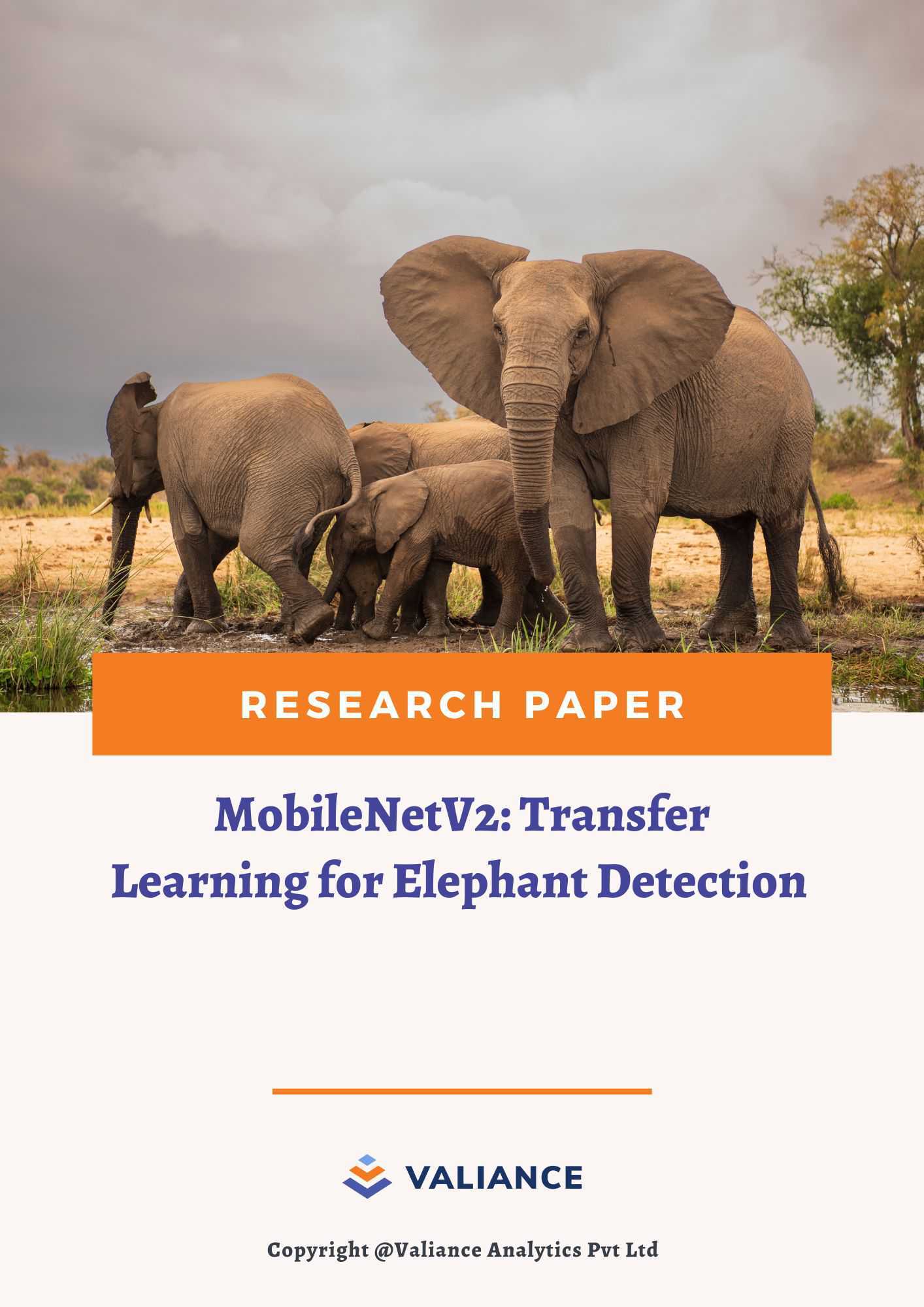Title:
MobileNetV2: Transfer Learning for Elephant Detection
Authors:
Samay Sawal – Intern Data Scientist, Valiance Solutions, Noida, India
Shailendra Singh Kathait – Co-Founder and Chief Data Scientist, Valiance Solutions, Noida, India
Summary:
Wildlife conservation and ecological monitoring rely heavily on accurate species classification. This research presents a deep learning-based approach for elephant detection using MobileNetV2 and transfer learning techniques. Traditional classification methods are labor-intensive and prone to human errors, making automated solutions essential for improving efficiency and accuracy.
The study utilizes images captured from a specific reserved region, structured into two categories: “elephants” and “others.” Data augmentation techniques, including rotation, shifting, zooming, and flipping, enhance model robustness. MobileNetV2, a lightweight and efficient convolutional neural network, is employed as the feature extractor, leveraging pre-trained ImageNet weights. Custom layers such as Global Average Pooling, Fully Connected Layers, and Dropout were integrated to optimize performance.
Comparative analysis with CNN and VGG16 models demonstrated that MobileNetV2 achieved superior classification performance, with a test accuracy of 98.31% and significantly lower computational costs. Transfer learning expedited model training and improved generalization across diverse environmental conditions.
This research highlights the effectiveness of MobileNetV2 in wildlife monitoring and conservation. Future work includes expanding the dataset, deploying real-time monitoring systems on edge devices, and implementing individual elephant identification for enhanced conservation efforts. The proposed model serves as a scalable solution for automated wildlife classification tasks.



